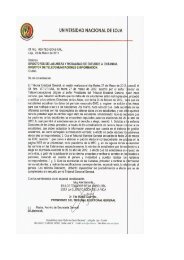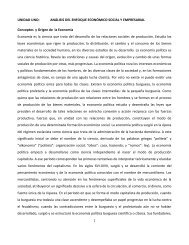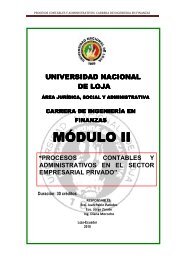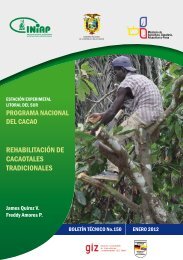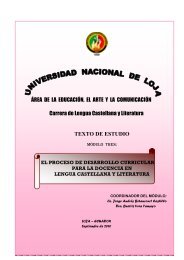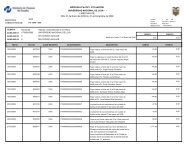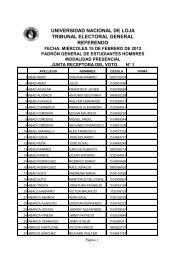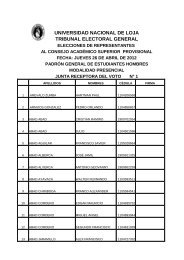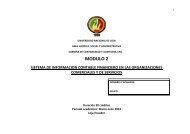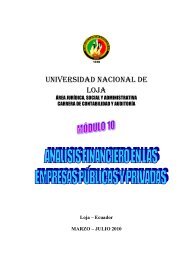module 5 planning of the english language teaching-learning process
module 5 planning of the english language teaching-learning process
module 5 planning of the english language teaching-learning process
Create successful ePaper yourself
Turn your PDF publications into a flip-book with our unique Google optimized e-Paper software.
UNIVERSIDAD NACIONAL DE LOJA<br />
Área de la Educación el Arte y la Comunicación<br />
English Language Career<br />
• What time is Gone With <strong>the</strong> Windom <strong>the</strong> television?<br />
• Who Lost <strong>the</strong>ir cat?<br />
• What did Sarah Raphael say when her pain ting was sold to <strong>the</strong> Metropolitan<br />
Museum <strong>of</strong> Modern Art in New York?<br />
2. Give <strong>the</strong> students advertisements from a newspaper showing prices <strong>of</strong>, for<br />
example, houses, cars, TVs, etc. and advertisements for jobs showing salaries.<br />
Ask questions such as:<br />
• How much do things cost in Britain (or <strong>the</strong> country <strong>of</strong> origin <strong>of</strong> <strong>the</strong> newspaper)?<br />
• How do <strong>the</strong>se prices relate to what people earn, judging by <strong>the</strong> advertisements for<br />
jobs?<br />
• How do <strong>the</strong>se prices and incomes relate to those ill your own country?<br />
3. Cut out several headlines and ask <strong>the</strong> students to discuss what <strong>the</strong> article might he<br />
about. This is a good way <strong>of</strong> developing predictive reading skills.<br />
4. Cut out several headlines and articles and ask <strong>the</strong> student to match <strong>the</strong>m.<br />
5. Cut ant several photographs and <strong>the</strong>ir Captions separately. Ask <strong>the</strong> student's to<br />
match <strong>the</strong>m. Ono approach lo this technique is give a photograph to a pair <strong>of</strong> students<br />
and to ask <strong>the</strong>m to note down as much as <strong>the</strong>y can surmise from a study <strong>of</strong> <strong>the</strong> picture.<br />
They should <strong>the</strong>n write a short article or caption to go with it before being shown <strong>the</strong><br />
actual one used.<br />
6. Cut up an article into several pieces and ask <strong>the</strong> students to sequence <strong>the</strong> pieces<br />
correctly. This can be done in various ways. In one version <strong>the</strong> class is divided in to<br />
small groups and each is given one section <strong>of</strong> an article. They study it and try to make<br />
sense <strong>of</strong> it. Then <strong>the</strong> teacher asks each group to read out <strong>the</strong>ir piece <strong>of</strong> <strong>the</strong> article. The<br />
groups make notes un <strong>the</strong> o<strong>the</strong>r pieces <strong>the</strong>y hear and try to decide what order <strong>the</strong>y<br />
should be in. Next <strong>the</strong>re is a class discussion. The pieces can be read and re-read until<br />
everyone is in agreement. Finally <strong>the</strong> whole article is read out.<br />
[Escribir texto] Página 139



